Published
Team retreat at the Eames Archives and Ranch
Last week, the Eames Institute Digital Product team got together at the newly-opened Eames Archives in Richmond, CA and the currently-under-renovation Ranch in Petaluma, CA. Llisa Demetrios – one of the Eames grandchildren, a founder of the Eames Institute, and our Chief Curator – gave DP a private tour of the Archives, and we walked from one end of the Ranch to the other guided by Farm Manager David Evershed, Director of Ranch Operations Benjamin Godfrey, and VIP (Very Important Puppy) Tipsy. Incredible to explore and meet them + so many other EI folks IRL.
I won’t share pics of the Archives since my photos either have people in (I don’t like sharing faces without permission) or are basically low-qual versions of the much better photos you can find on the website. And I won’t share much about what DP got up to discussion-wise, hoping to share our progress in a different format elsewhere soon.
But here are a few snaps of the Ranch as well as some of my favorite tidbits + moments.
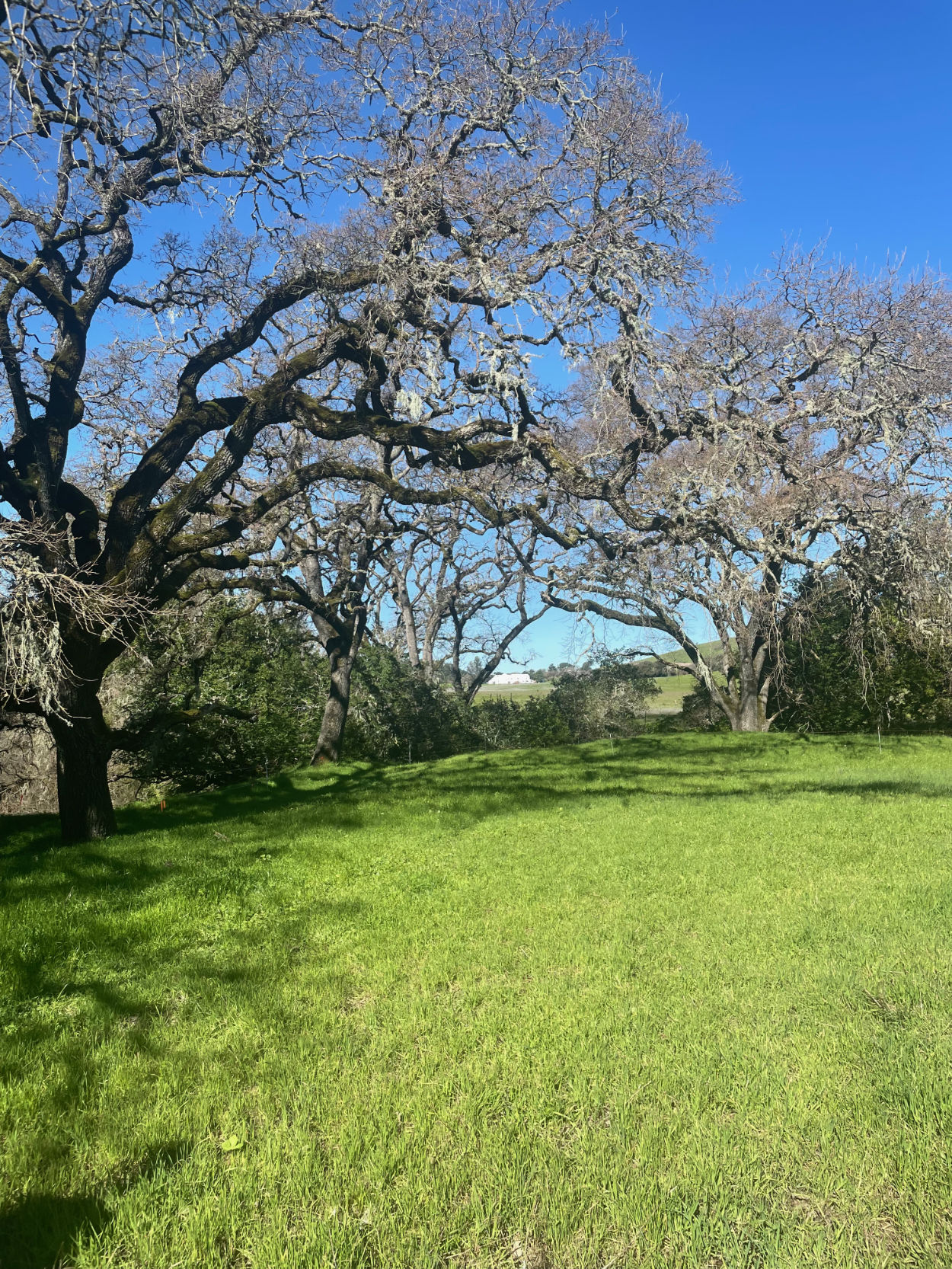
Looking west to the Turnbull barn at the Eames Ranch in Petaluma, CA
***
Cannot BELIEVE how green it was. I couldn’t stop mentioning it. It was greener than the entire time Sam and I lived in SF from June 2020 to September 2021.
Crazy what a reasonable amount of rain will do… Will this mean fewer fires this year, or worse because of all the fuel?
***
Was tickled by so many artifacts (drawers packed with ephemera, prototype after prototype, the musical tower, the cast metal lounge chair, and so on), but maybe most by this fake college diploma by Saul Steinberg for Charles Eames.
***
Llisa during the tour: “Ray and Charles never considered something a failure, just part of its conception.” The more optimistic side to this feeling.
***
Note from tour: Critical to recognize as many constraints as possible when starting a project
***
Also Llisa during the tour: “Ray and Charles realized that when designing an exhibit, you can never show everything on a subject, that would be impossible. But you can show 6–8 things to get someone excited enough to do their own deeper research.”
This feels similar to my art professor’s advice long ago of “large, medium, small, and small repeats”, though her advice was related to composition rather than design/communication. It also feels similar to the idea of expansion and contraction when it comes to someone’s experience of a space, whether that is physical or digital. You can play with that contrast to evoke the appropriate feelings and emotions, and to pace someone’s attention.
***
Ray Eames went to Bennett in the early 30s back when she was Ray Kaiser. I was surprised to hear that name on the tour, my mom went there too just before it closed in the mid-70s.
***
Got to know one of my lovely coworkers via a great little walk from the Archives along the Richmond Inner Harbor segment of the SF Bay Trail. Blue skies above, a clear view of the city, and fiery Montbretia blooming all over. Invasive, but pretty.
***
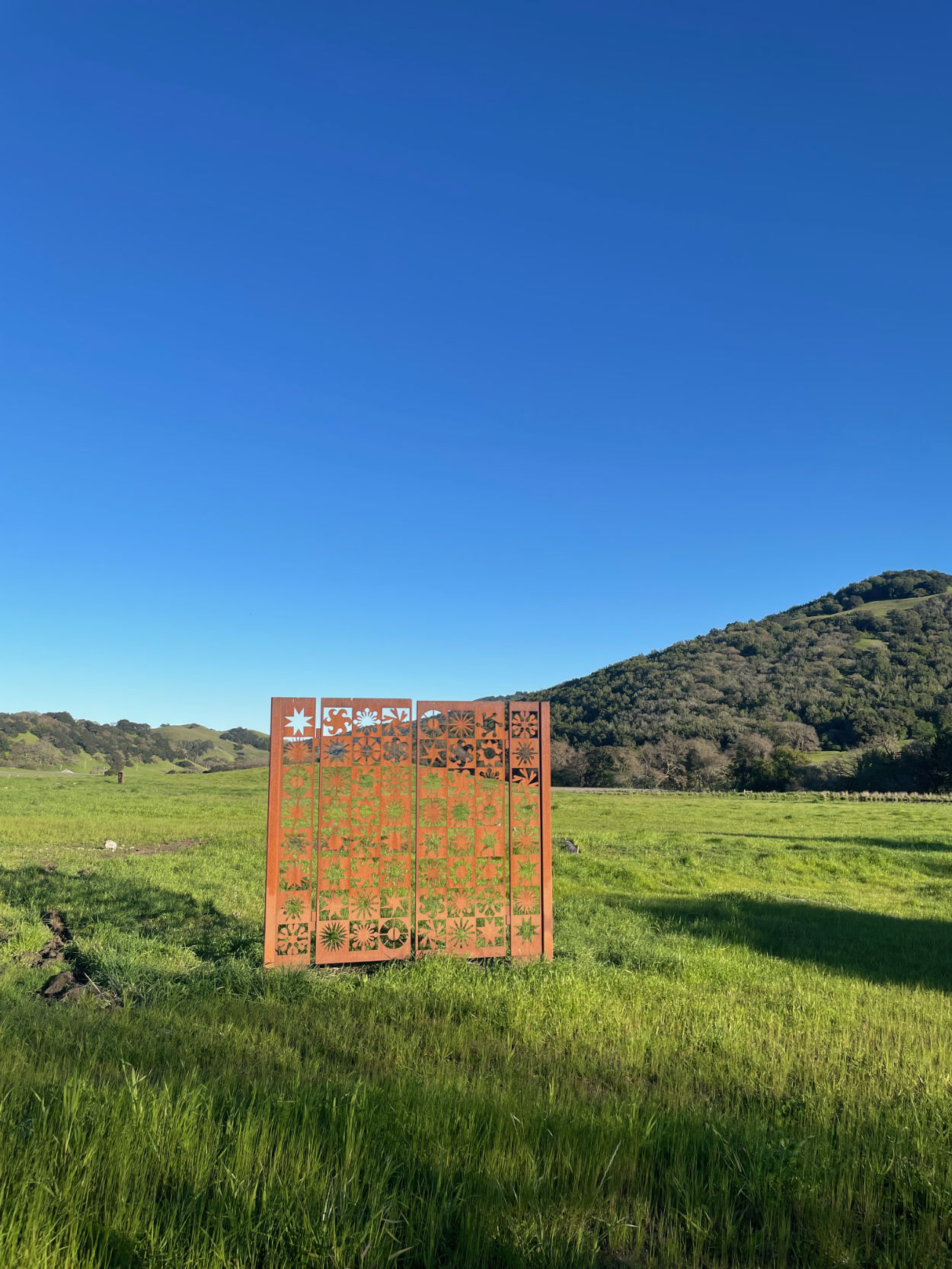
Lucia Eames’s sculptural gate at the Eames Ranch
***
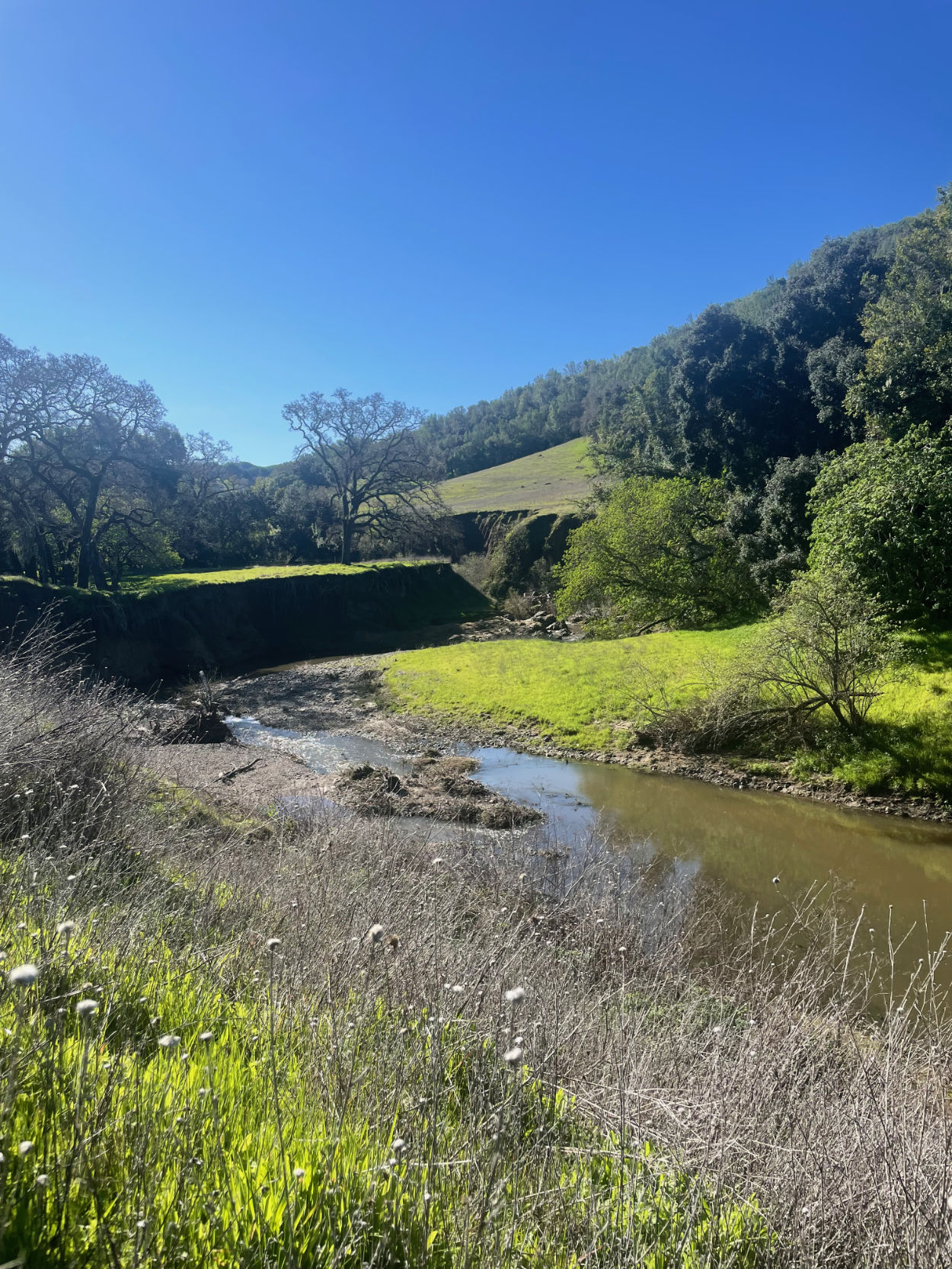
Looking east along San Antonio Creek on the Eames Ranch
***
They are up to some very interesting stuff at the Ranch.
In Benjamin’s words: “We’ve designed some of the world’s worst problems via agriculture.” The folks at the Ranch are finding ways to fix those problems with via research and experiments, and through partnerships with organizations working at the cutting edge of sustainable agriculture.
***
Look in to The Land Institute and their research in to perennial grains. Longer growth period means deeper roots, which means less water use and soil erosion. Not having to plow and apply herbicide every single year around planting lowers costs and leads to less CO2-releasing and microbiome-disrupting soil disturbance. Very cool.
***
I knew that the Ranch team had been experimenting with carbon sequestration via composting, but I really had no idea of the scale of the potential impact.
First off: I never really realized the full extent of composting on agriculture itself. As a city dweller, I usually just think of it as a way to prevent organic waste from rotting in landfill, an example of “reuse” from the three Rs. In actuality, it significantly impacts soil’s capacity to retain water and rebuilds the soil microbiome making it more fertile. The water retention impact is potentially huge when you consider the droughts that we increasingly encounter each year, particularly in the Central Valley.
So, on to their findings so far. By spreading ¼” compost over 50 acres, they calculate that they will save the carbon equivalent of 312 million car miles over 15 years.
That’s the result of just one ¼”-spread of compost over just 50 acres. That is wild.
There are about 770 million acres of rangeland in the US alone, 409 million acres of which are privately owned (source). The potential impact of spreading compost across even a fraction of that land is astronomical. And it will save farmers money over time in water use and the overall productivity of their soil.
We sometimes compost, but really should be composting all the time. Send me your suggestions for the best countertop composting bins.
***
So much more to be said on the Ranch’s other efforts including rotational grazing, invasive star thistle management, their farm garden (currently packed with flowering daikon and Austrian Winter Peas before spring planting), virtual fencing, etc. Hope to write more about that later, this post is already too long.
***
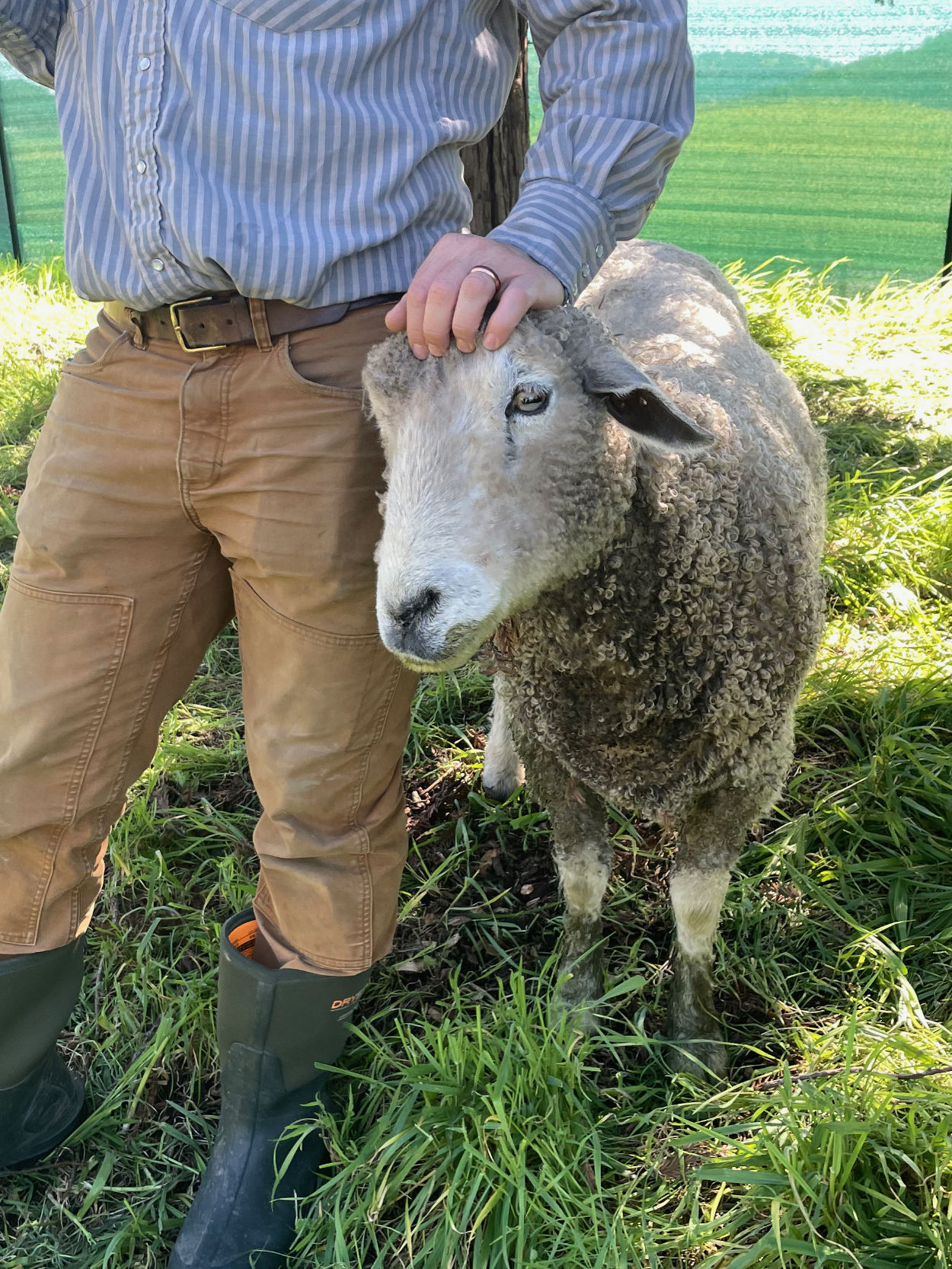
Fanny the sheep getting some love on the Eames Ranch
***
All of the above reminded me of what they are doing at Ambrook trying to demonstrate that sustainability can be profitable. Seems like a cool org, a startup doing something genuinely useful instead of disruption for disruption’s sake.
***
Everything that the Experiences team is up to tempts me back to the Bay… potlucks, workshops, process-based watershed restoration classes (with a guy nicknamed “Mr. Beaver”?? yes pls), markets, residencies, and more. Worth keeping an eye on the Eames Institute Instagram account or signing up for the newsletter if you’re in the area and interested.
***
I need to look in to Temple Grandin. David mentioned her in relation to some of the cattle fencing at the Ranch and how her work as an activist for the humane treatment of livestock significantly influenced its design, and animal husbandry in general. Apparently the biopic about her won awards, probably worth watching. Surprised I hadn’t heard of her before.
***
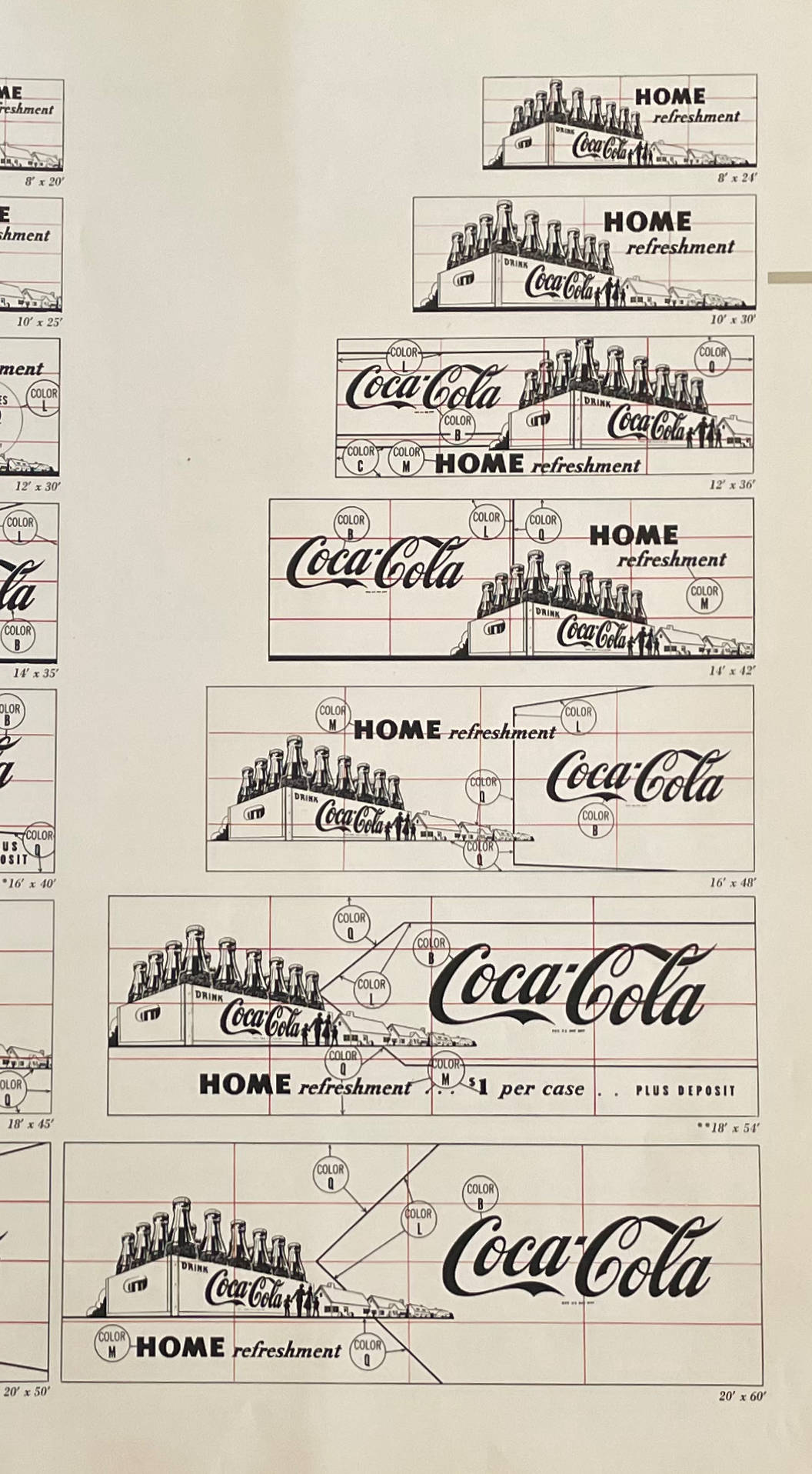
Our visit ended with a trip to the Letterform Archive. Laura walked us through some fascinating pieces from their collection including mid-century photo-type specimens, a gorgeous poster-sized Japanese sugoroku (a snakes-and-ladders-esque board game) originally included in Shōjo no tomo (“Girl’s Friend”) magazine, a teeny tiny booklet from Kyoto around 1880 outlining annual events and the use of botanical objects for each occasion, a number of playfully illustrated issues of Scope Magazine from the 1950s (some with shockingly explicit medical photographs inside!), an original MATHEMATICA exhibition catalogue, an absolutely enormous Coca-Cola advertising manual, the fantastical Codex Serefinianus, delicate accordion fold artist books by Warja Lavater depicting classic fairy tales, explosively colorful risograph-printed pieces by Margaux Bigou (a screen’s color gamut really doesn’t do her work justice at all), and more.
While we were poking through the materials, Michael rightly pointed out that Coca-Cola’s designers beat us all to “responsive” design by many decades. LOL
Edit 21 March 2024: HA! Nick just shared with me that he did a little adaptation of some of Coco-Cola’s layout specifications a while back, check it out here. You’ll want to resize from something landscape-y to very tall and skyscraper-y.
***
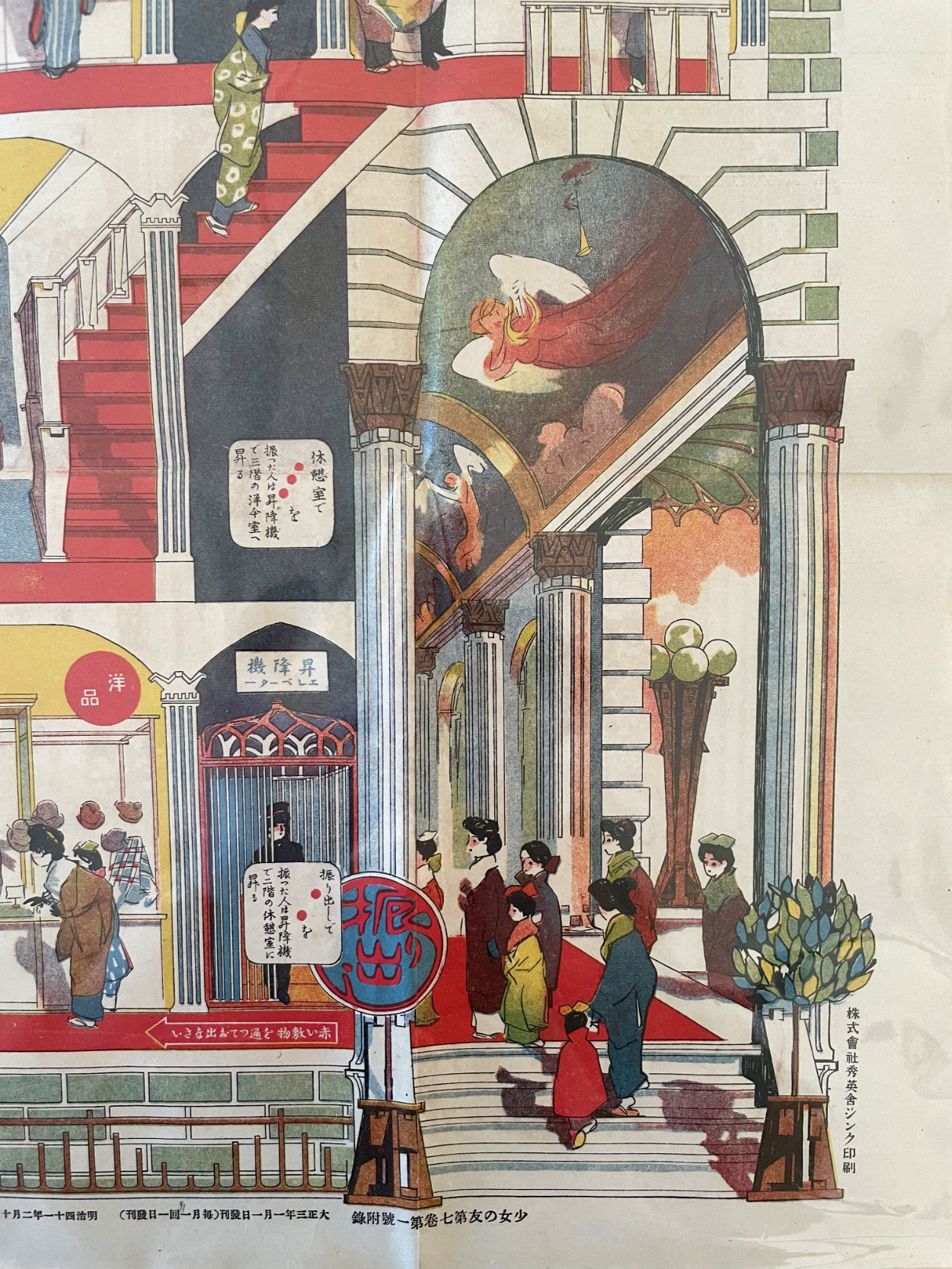
Detail of sugoroku board game from mid-century Japan, at the Letterform Archive
***
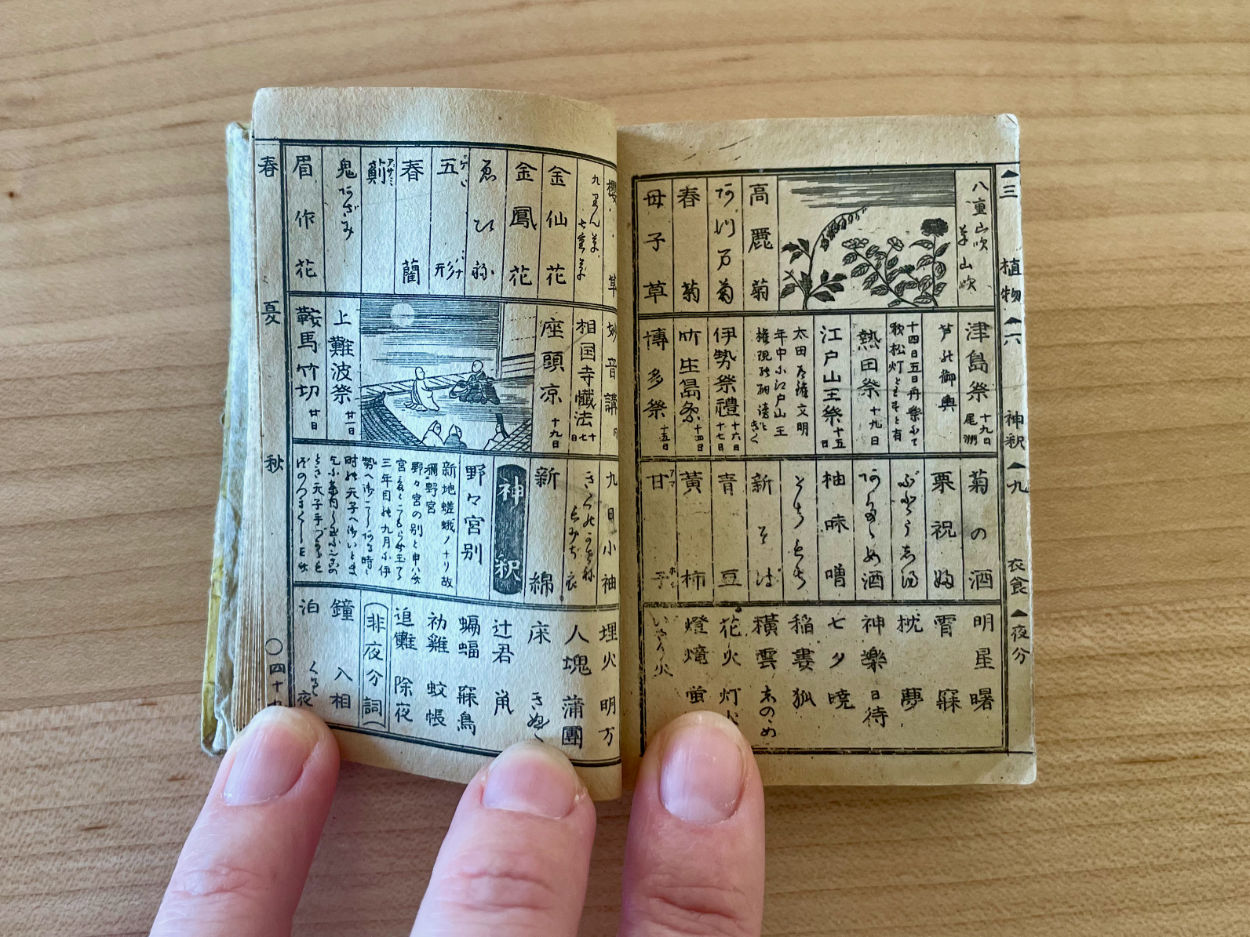
Spread from a tiny Japanese booklet dating around 1880 outlining annual events and the use of botanical objects for each occasion, at the Letterform Archive
***
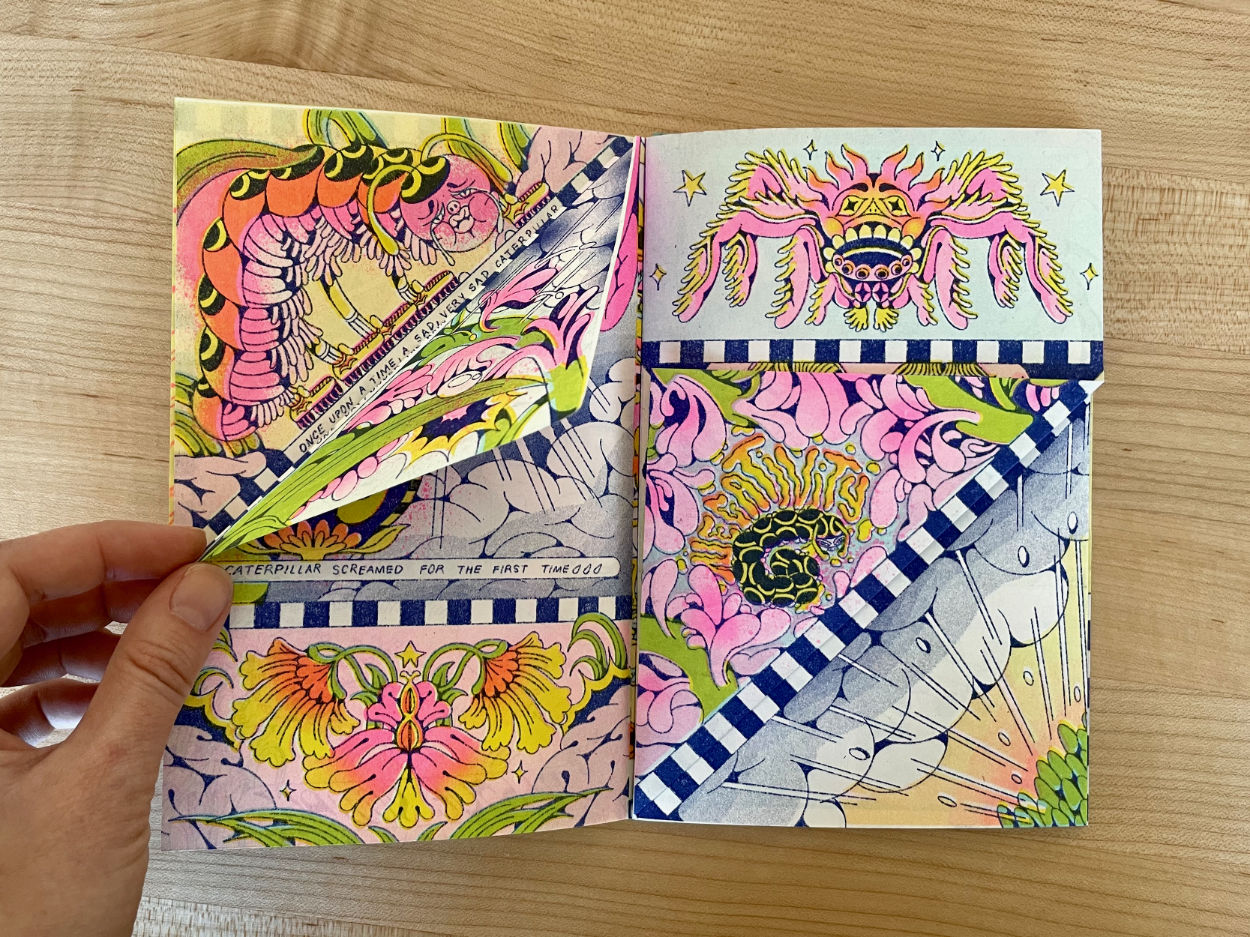
Spread from one of Margaux Bigou’s risograph-printed zines at the Letterform Archive
***